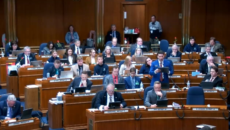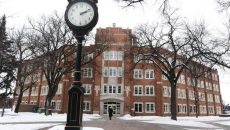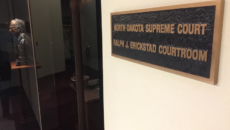Shirvani The Scapegoat Is Gone, North Dakota University System's Hostility To Transparency Remains

“So Shirvani is gone now, and lo and behold in Friday’s edition of The Press ran the headline, ‘Another illegal meeting for state higher ed board?'” writes Klark Byrd for the Dickinson Press, noting that the former chancellor who had quickly become a scapegoat for all the ills in North Dakota’s university system isn’t around to be blamed any more.
Byrd is absolutely right, and I’ve made similar points before. The problems in higher education in North Dakota didn’t begin with Shirvani – I would argue that he was tasked with fixing them – and they’re certainly not going to end now that a group of pampered, petulant university presidents have succeeded in pushing him out.
“Shirvani’s contract was bought out for one reason: He was not well liked as a leader and as an outsider,” writes Byrd, “North Dakotans could easily point the finger and say “That’s what’s wrong with our university system. Off with his head!”
Again, that’s exactly right.
When I first began writing about North Dakota’s higher education problem I got a lot of flak for supposedly inventing problems that others didn’t see. Back in 2011 I had a fairly high-profile confrontation with then-SBHE member Mike Haugen who made an impromptu call to a radio show I was guest hosting to call me out on the higher ed issue. Many of the state’s newspaper editorial boards were quick to thrash me, either by name or through allusions, for writing about the problems at the universities.
But now after a series of nasty scandals, including rampant diploma fraud at Dickinson State for which nobody has ever been held legally accountable, there are some cracks showing in the facade. Even the most ardent of university system apologists are forced to admit to problems.
The problem with Shrivani, in the eyes of his critics, was that he was willing to point out those problems from within the system itself. Not only that, he had an open-door policy with critics such as myself which drove other people within the university system crazy. Before Shirvani came along, I got the feeling that the standard order for responding to my requests for data and information was to stonewall and sandbag.
When Shirvani came in, I got the information I wanted in a timely fashion. And, again, it didn’t make everyone happy. Below find internal emails from the university system, obtained from an open records request I filed on a lark seeking all internal emails sent about a previous open records request I filed (for gender breakdowns in graduation rates), in which NDUS “whistleblower” Linda Porter is griping about providing me with information.
She accuses me of data mutilation, though nobody from the NDUS contacted me directly with any complaints, and is eventually told by Assistant CIO Mick Pytlik that the NDUS can’t dictate to the public how the data from the NDUS is used.
The email exchange is shocking, and revealing as to the culture of arrogance and hostility to any sort of accountability that seems to permeate the university system. Remember that Porter also accused Chancellor Shirvani of manipulating data (all he really did was make peer comparisons that weren’t exactly flattering for North Dakota’s institutions). But the real problem university system bureaucrats like Porter, and others, have is that much of the data they keep paints a startlingly negative picture of the state’s universities.
For years the public has been kept largely in the dark about the problems. All we got from the news media, aside from intensive coverage of the university’s sports teams, was a recycling of university talking points. Economic impact. The universities are the “economic engines” of the state. Swelling enrollment numbers.
Until recently few talked about skyrocketing tuition, soaring administrative costs, and abysmal graduation rates.
But Shirvani was at least willing to talk about the problems, and in doing so violated the university system’s seeming code of omertà when it comes to problems.
And then he was sent packing.
That’s water under the bridge now. The question for North Dakotans, who must live with this costly 11-campus behemoth, is what now?







